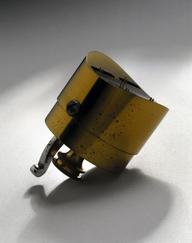

Box for von Pirquet's tuberculin test, London, England, 1910-1914




Dummy box of ampoules with instructions, for von Pirquet's tuberculin tests by Burroughs Wellcome and Co., London, 1910-1914
Clemens von Pirquet (1874-1929), an Austrian paediatrician, devised this test in 1907 to see whether a person has been exposed to the bacteria causing tuberculosis. Two drops of liquid tuberculin were placed on the skin of the forearm approximately 100 mm apart, scratched and covered with cotton wool. If a red hard raised area appeared on the skin within 24 hours of the test, it showed they had the disease, were naturally immune or had acquired immunity in some way.
The introduction of this test was a landmark in the diagnosis and prevention of tuberculosis. It is shown here with Calmette's tuberculin test (1981-1681/2).
Details
- Category:
- Public Health & Hygiene
- Collection:
- Sir Henry Wellcome's Museum Collection
- Object Number:
- 1981-1681/1
- Materials:
- cardboard, paper (fibre product), glass and metal (unknown)
- Measurements:
-
overall: 14 mm x 76 mm x 50 mm, .01kg
- type:
- tuberculin test
- credit:
- On loan from the Wellcome Trust




